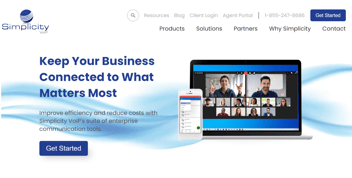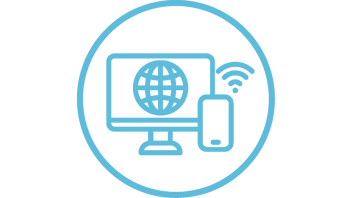You Kids Get Off My Lan! 5 Tech Terms You Should Know
As technology races ever faster into the future, so does the terminology used to describe it. Many, we know implicitly, firewall, virus, open source. Many are often vaguely defined. Many are hot topics at dinner parties and nobody's really sure what they're talking about. Now you can know what you're talking about with a list of 5 essential terms in information and technology. This list is nonexhaustive. [For convenience, we've abbreviated the definitions for skimming].
LAN : Local Area Network. So this isn't rocket science. It's a localized grouping of computers, which are connected via wired or wireless signal. A Lan is typically constrained to a single building or a small grouping of buildings.
- Too Long, Didn't Read: A localized group of computers that can talk to each other.
SERVER: A frequently misunderstood word at social gatherings, at its most basic, a server is software. This software (and directly associated hardware) provide services to client software and hardware on a network. This is the client-server architecture which separates processes between the server and the client. It is a major element of modern OS design
- Too Long, Didn't Read: A software that manages access to a centralized resource.
OS: Operating System. Another software that manages computer hardware and software for a user. It provides a common service for a variety of programs, and often has a GUI (graphical user interface) to enable a user to quickly and effectively manage many programs simultaneously. Windows, Linux/Unix, iOS, and Android are all examples of operating systems. Each OS has their own unique advantages.
- Too Long, Didn't Read: The large software that manages the software and hardware on a PC
GUI: Graphical User Interface. Without A GUI you wouldn't be checking your email, browsing the web, writing papers, or anything, on your computer (or phone, tablet, kindle....). A GUI enables a user to interact indirectly with software within a computer. It uses graphical icons and secondary notation to enable a user to interface with certain formal notations (code).
- Too long, didn't read : A GUI is what you see on your monitor. It's what allows you to read this blog.
API: Application Program Interface. API's enable different software to interact with each other by enabling connectivity between unrelated components. APi's enable totally unrelated software to interact in simple, standardized ways to improve functionality.
- Too long, didn't read : A bit of code that enables interaction between previously unconnected software.
Hopefully this humble post has given you the tools to steal the spotlight at your next social gathering, blow away your peers with your unparalleled intellect. or even to learn something!
About Simplicity
Simplicity VoIP, based in Richmond, VA, provides hosted PBX, VoIP and business telephone solutions nationally to small, medium, and enterprise-level businesses for a comprehensive unified communications experience. Two distinct Class 5 geo-redundant VoIP platforms are offered in addition to fax-to-email, phones and equipment, and managed services. Named as Richmond’s 11th fastest growing company by Richmond BizSense, Simplicity VoIP’s key to success is its on-site service, installation and training supported 24/7/365 by a world-class client services team.





